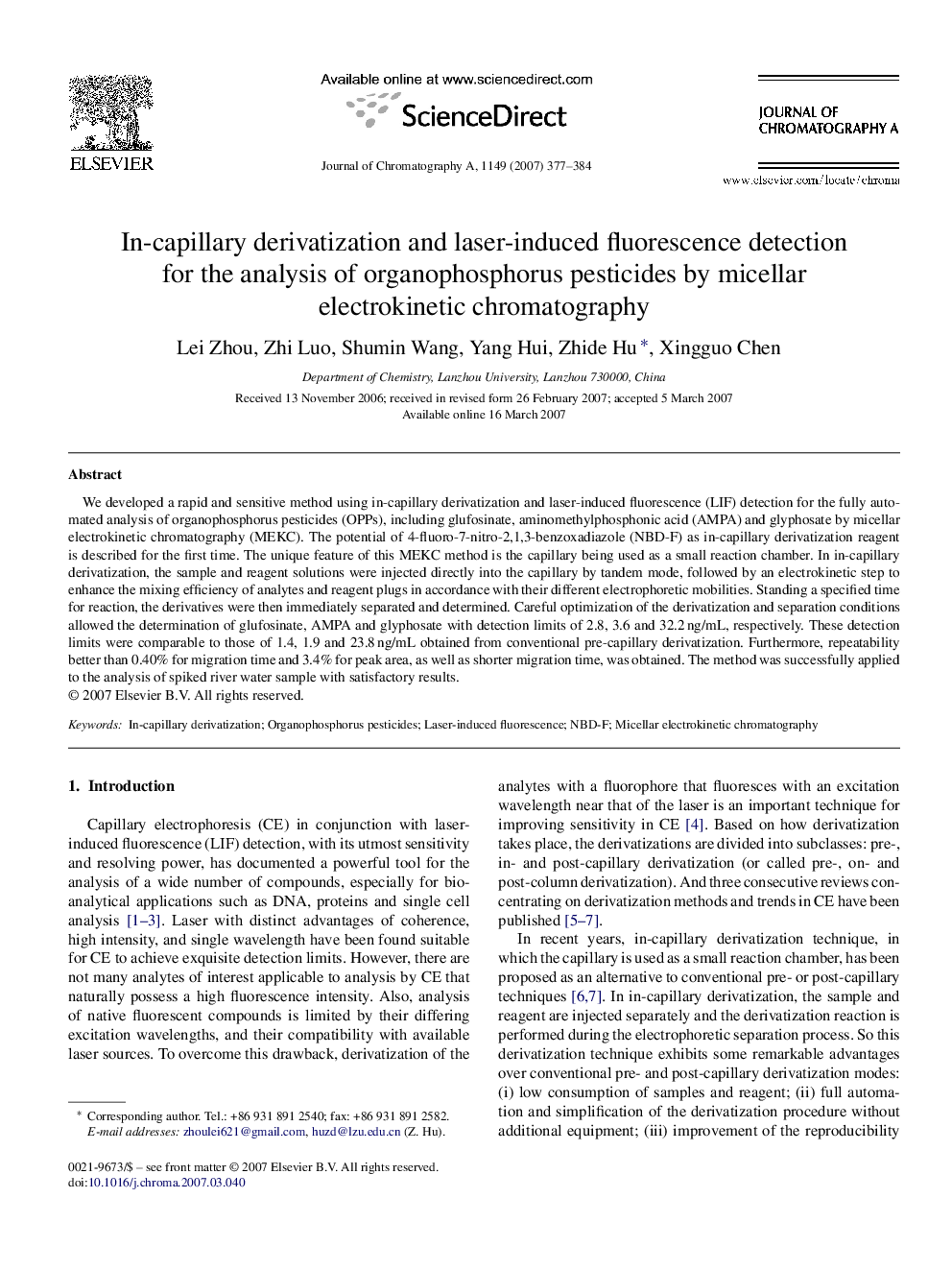| Article ID | Journal | Published Year | Pages | File Type |
|---|---|---|---|---|
| 1207739 | Journal of Chromatography A | 2007 | 8 Pages |
We developed a rapid and sensitive method using in-capillary derivatization and laser-induced fluorescence (LIF) detection for the fully automated analysis of organophosphorus pesticides (OPPs), including glufosinate, aminomethylphosphonic acid (AMPA) and glyphosate by micellar electrokinetic chromatography (MEKC). The potential of 4-fluoro-7-nitro-2,1,3-benzoxadiazole (NBD-F) as in-capillary derivatization reagent is described for the first time. The unique feature of this MEKC method is the capillary being used as a small reaction chamber. In in-capillary derivatization, the sample and reagent solutions were injected directly into the capillary by tandem mode, followed by an electrokinetic step to enhance the mixing efficiency of analytes and reagent plugs in accordance with their different electrophoretic mobilities. Standing a specified time for reaction, the derivatives were then immediately separated and determined. Careful optimization of the derivatization and separation conditions allowed the determination of glufosinate, AMPA and glyphosate with detection limits of 2.8, 3.6 and 32.2 ng/mL, respectively. These detection limits were comparable to those of 1.4, 1.9 and 23.8 ng/mL obtained from conventional pre-capillary derivatization. Furthermore, repeatability better than 0.40% for migration time and 3.4% for peak area, as well as shorter migration time, was obtained. The method was successfully applied to the analysis of spiked river water sample with satisfactory results.
